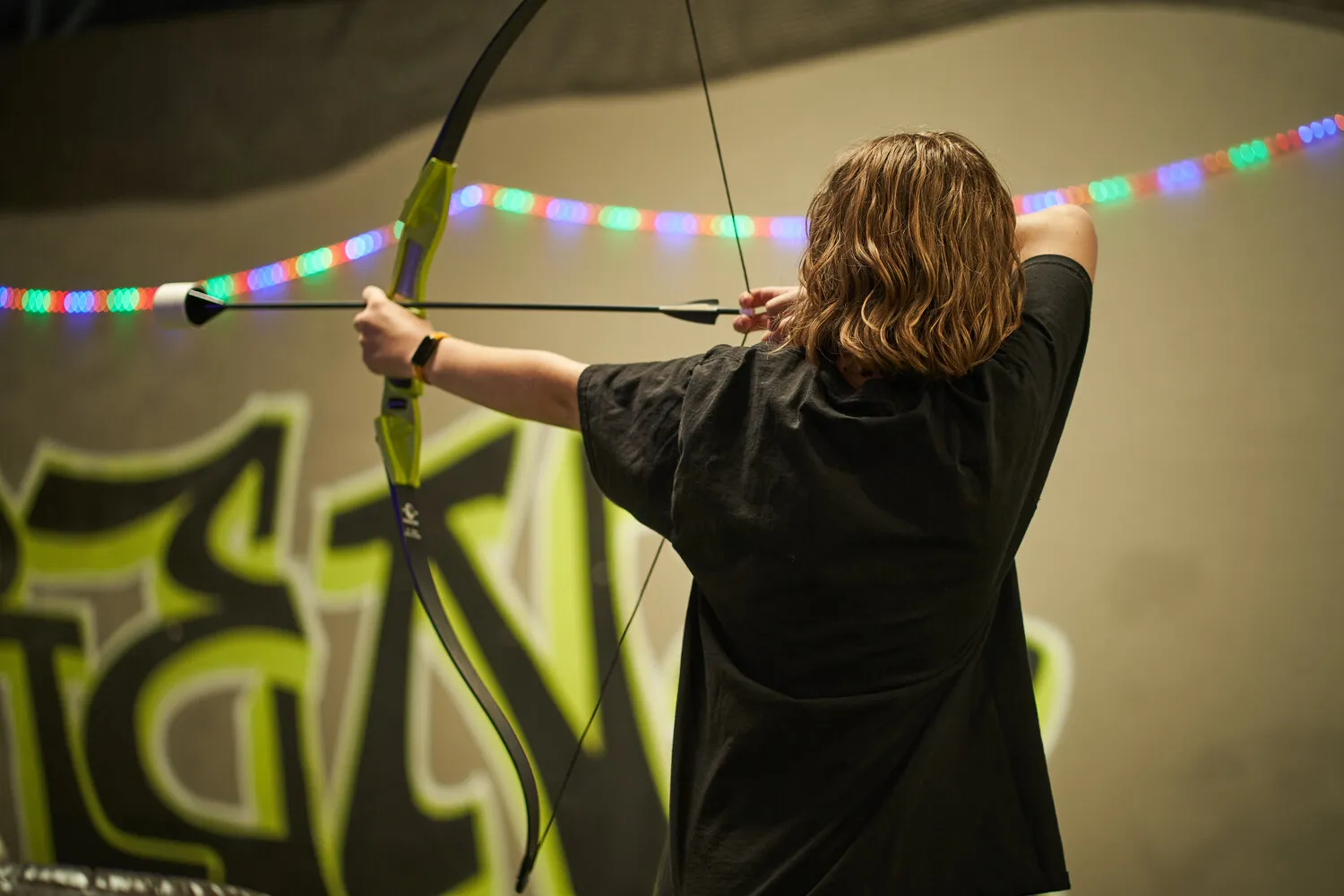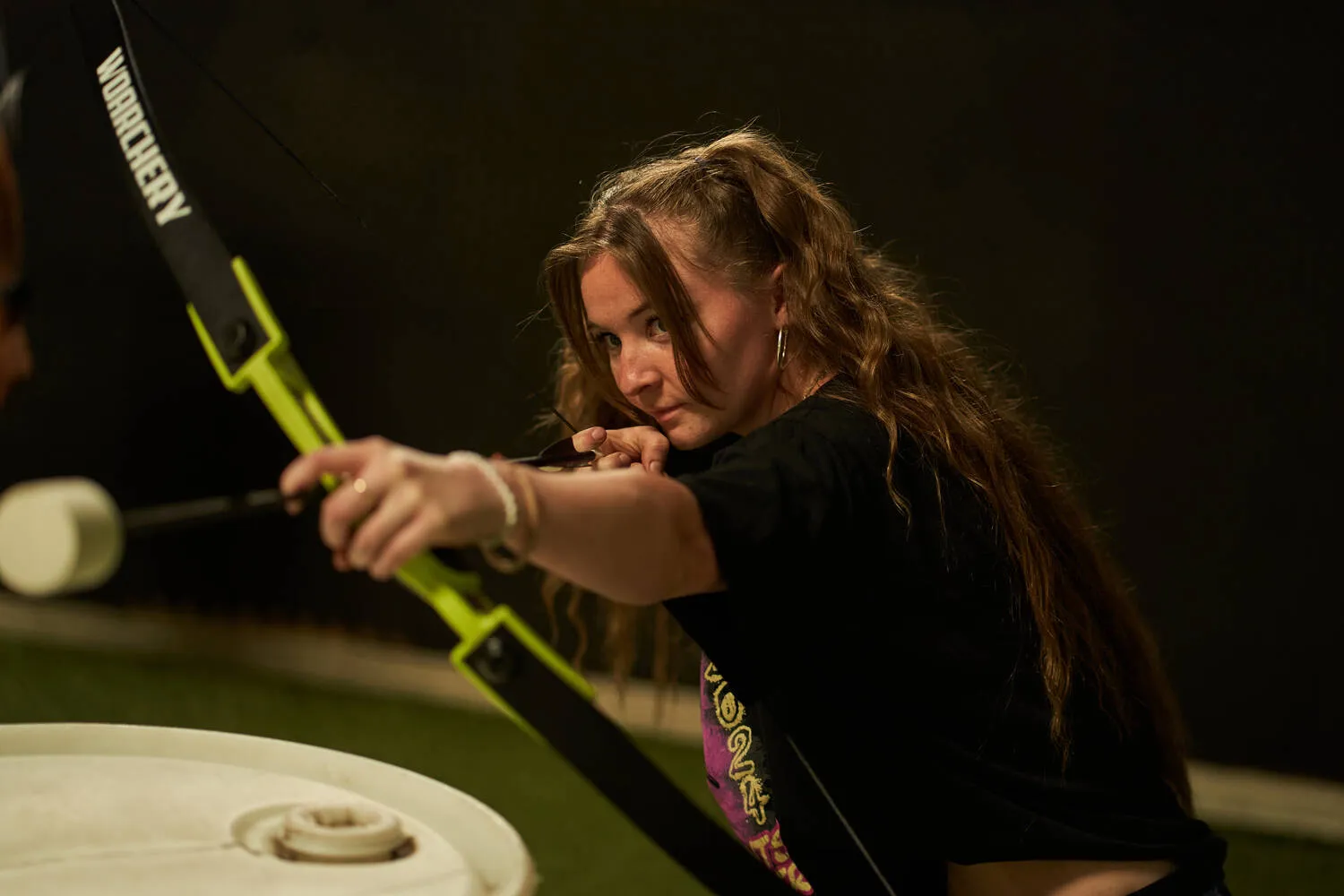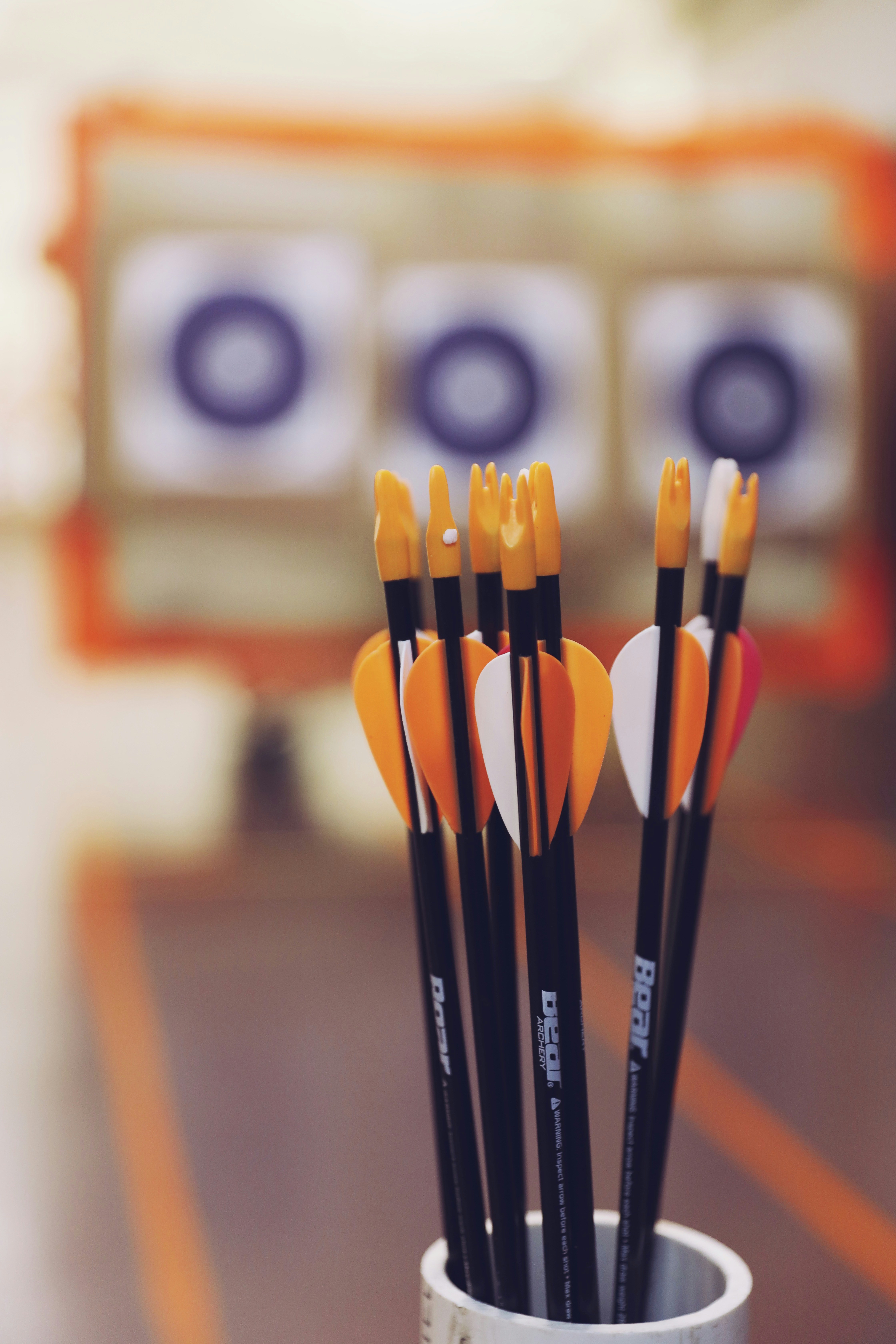Arrow Tag is an exciting and challenging activity combining archery elements with strategic, team-based gameplay. Organized games require careful planning, proper target selection, and effective setup to ensure a fun, safe, and competitive experience. Choosing the best target options is crucial for escape rooms and team-building events, particularly those provided by Brainy Actz Escape Rooms. Teams need durable, safe targets that are easily set up and adjustable for various skills. This article dives deep into different types of arrow tag targets, evaluates their advantages, and provides guidelines for game design.
Key Takeaways
- Target selection sets the tone for arrow tag gameplay—choose based on safety, speed, and fun for every group type.
- Inflatable, stationary, and human-shaped targets each offer unique benefits, from safety and movement to tactical immersion.
- Strategic placement enhances team play, encouraging communication, planning, and real-time decision-making during matches.
- Choke points and tactical zones raise the intensity of each game, making gameplay more competitive and goal-driven.
- Indoor vs. outdoor setups require different gear, with inflatable and weather-resistant targets working best outdoors and flexible, compact layouts indoors.
- Blending target types and adjusting layouts keeps games fresh, replayable, and engaging for both new and returning players.
Identifying Superior Target Choices for Arrow Tag Adventures

Choosing the right targets is key to making your arrow tag session epic. It’s not just about aiming well—it’s about keeping things safe, fast-paced, and downright fun. Whether you’re running a team-building event, birthday bash, or just rallying your squad for a showdown, having targets that are sturdy, easy to move, and exciting to hit makes all the difference. From inflatable barricades to realistically shaped dummies, the options are wild, and each brings something unique to the arena.
Using Inflatable Obstacles to Shake Things Up
Inflatable targets are your go-to for energetic, fast-action play. They’re soft enough to keep everyone safe but tough enough to take repeated hits. These bounce-back-style obstacles let you dodge, weave, and slide your way through the game like a real battlefield. Plus, you can shift them around to build new layouts in minutes—perfect for back-to-back sessions or custom game rounds. They keep things fun, unpredictable, and 100% team-approved.
Stationary Stands for Sharpening Skills
Want to see who’s got the best aim? Stationary targets are all about focus and precision. These no-move zones are great for warm-ups or head-to-head accuracy battles. Since they stay solid no matter how many times you tag them, players get reliable feedback every time. They’re especially useful for mixed-skill groups where some want to practice while others dive into chaos mode. It’s simple, satisfying, and a great confidence booster.
Realistic Targets for Tactical Vibes
Add some spice to your session with human-shaped or themed targets that feel straight out of a stealth mission. These targets are perfect for building realistic challenges where aim, speed, and placement matter most. Whether you’re staging a “rescue” mission or dialing the intensity, these dummies make you think on your feet. Their life-sized look gives teams a clear visual goal and boosts immersion in competitive scenarios.
Designing Arrow Tag Games With Effective Target Placements

Effective game design lies in creating compelling target placements that enhance both the competitive challenge and overall fun of arrow tag. The arrangement of targets, their positioning relative to player starting zones, and their distribution throughout the play area can significantly affect team dynamics and match outcomes. Designers must consider factors such as player movement, natural choke points, and varied sightlines to create a balanced game environment.
Spacing Targets for Balanced Team Play
A good arena keeps things fair while still letting chaos unfold. Spread your targets across the field in a way that gives every team an equal shot at winning. Put high-risk targets in the open, and drop cover zones around tricky areas to push players to work together. Keeping distances varied means players must constantly shift strategies—close-quarters combat in one zone, long-range snipes in another. It’s that mix of tactics that keeps everyone on their toes.
Switching It Up for Different Game Formats
Every game mode needs its own flavor. For team elimination rounds, targets should help players defend zones or stage quick ambushes. For free-for-alls, scatter targets randomly to create mad dashes and unpredictable skirmishes. Capture-the-flag? Set up distraction targets to force teams to split their attention. When you line up the field to match the format, you make the entire experience more immersive, engaging, and fun.
Mixing Target Types for Variety
Why stick to one style when you can have it all? Use a combo of inflatable, stationary, and unique-shaped targets to build a course that changes every time someone steps in. One side might be about dodging inflatable barricades, while the other focuses on precision shots through narrow gaps. Variety helps players of all skill levels stay engaged and gives returning groups something new to tackle every visit. No boring games here—just non-stop action.
Utilizing Targets to Create Choke Points and Strategic Zones

Choke points and strategic zones are where Arrow Tag matches go from fun to full-on legendary. These are the spots that force players into face-offs, quick thinking, and teamwork under pressure. By placing your targets in smart, high-impact areas, you guide how the game flows. Whether setting up crossfire zones or hide-and-shoot alleys, it’s all about building tension, boosting excitement, and making every shot count.
Creating Tension With Narrow Pathways
Drop a few targets into tight corridors or between inflatable walls to create bottlenecks where teams must make bold moves. These hot zones make it tough to sneak through unnoticed and often become battlegrounds that test accuracy and nerves. Whether players go in guns blazing or sneak around for a surprise shot, these setups bring nonstop suspense. Its strategy meets adrenaline—and the results are always epic.
Turning Zones Into Tactical Objectives
Strategic zones can be more than just shooting spots—they can become goals. Place high-value targets in central or hard-to-reach areas and watch teams develop plans to protect or take them down. Squads cover corners, call plays, and coordinate like pros. It makes the whole experience feel more like a real mission, and it’s perfect for team-building sessions or advanced groups who want a challenge.
Blending Static and Moving Targets for Depth
Want to really mess with players in a good way? Combine stationary targets in easy-to-reach areas with moving ones in the trickier zones. This layered setup adds difficulty, encourages communication, and pushes players to level up their timing. Defending a choke point while trying to tag a moving target becomes a wild mix of pressure and precision. It’s the kind of setup that makes people want to replay again (and again).
Adapting Target Setup for Indoor Versus Outdoor Arenas

Whether playing in a glow-lit indoor arena or a wide-open outdoor space, your target setup needs to match the environment. Indoor games are all about tight movement, fast reactions, and controlled chaos. Outdoors, it’s open fields, longer shots, and natural obstacles. Picking the right target style and placement for each space ensures players get the full-throttle experience without losing momentum or compromising safety.
Building Fast-Paced Indoor Setups
Indoor spaces work best with lightweight targets that are easy to move and quick to set up. Since you’re working with tighter layouts, aim for compact inflatable barriers, close-range bullseyes, and quick reset stations. You’ll want to keep the action fast and the shots accurate, with no wasted time. Think glowing lights, tight corners, and constant motion—it’s all about maximizing every inch of space for peak intensity.
Leveling Up Outdoor Play Zones
Outside, you’ve got more room to stretch the chaos. Use large inflatable bunkers, sturdy weather-resistant stands, and human-shaped targets to turn an open field into a full-blown battlefield. Spread your targets to encourage flanking, long-distance shots, and big team plays. Plus, outdoor elements like wind and terrain mean players must adapt constantly, which keeps the game exciting and fresh every time.
Adjusting for Weather and Lighting Changes
Outdoors, the environment changes fast, so your gear needs to keep up. Use bright-colored or reflective targets to stay visible under different lighting, and choose materials that hold up in wind or sun. Consistency is your best friend—use bold, illuminated targets for a sharp look and clean layout. By tweaking your target setups to suit the scene, you’ll create smoother games and better player flow, no matter where the action happens.
Frequently Asked Questions
What target type is best for beginners in Arrow Tag?
Beginners should use oversized, stationary targets with a broad bullseye to ensure higher hit rates and reduced frustration. These are typically made from soft, impact-absorbing foam and are adjustable to increase difficulty as skills improve gradually.
How do moving target systems improve archery skills?
Moving target systems challenge archers by simulating unpredictable enemy movements. They train players to adjust quickly, improving reaction time, aim, and overall precision. Studies indicate that regular practice with moving targets can enhance shooting accuracy by up to 35%.
Are electronic scoring targets worth the investment?
Yes, electronic scoring targets provide real-time feedback, accurate hit detection, and statistical data that can be used to track performance improvements over time. They add a modern competitive edge to arrow tag games and are especially beneficial in tournament settings.
Can DIY targets be as effective as commercially made targets?
DIY targets can be highly effective when built with appropriate materials like high-density foam and reinforced frameworks. Custom-built targets offer the advantage of customization for themed events and can be cost-effective and durable when designed correctly.
Conclusion
Selecting the optimal target options for arrow tag games significantly elevates the gameplay experience while maintaining safety and enhancing skill development. Thoughtful target placement, material standards, and tailored designs for different group sizes and skill levels contribute to a memorable and engaging event. Whether through innovative DIY solutions or advanced electronic systems, the right targets can transform an arrow tag game into an immersive tactical challenge. Organizers are encouraged to implement these insights to drive bookings and provide top-tier adventure experiences.

